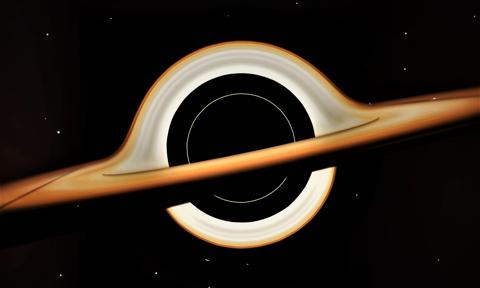
It seems like it’s black hole season now because every day there’s a new discovery and while it’s great for astronomers who want to understand how the universe works, it’s not really great for anyone who wants to plan whether or not they should worry about not getting enough food that is not processed sugar in their bodies (AKA me) because we’re all going to be eaten by a giant black hole in a few years anyway.
After discovering a black hole right in the middle of our galaxy, astronomers have discovered the fastest-growing black hole of the past nine billion years in the universe’s 13.8 billion years of existence.
This new, or old really, black hole is said to consume the equivalent of one Earth per second and has the mass of three billion suns. To put things into perspective, this one is 500 times bigger than the black hole at the center of the Milky Way (called SgrA*, in case you’re someone who has been able to think about anything other than this for the past month) and our black hole is 4 million times larger than the sun. You can do the math yourself.
This incredible discovery was made using the SkyMapper Southern Sky Survey, a 1.3 metre telescope in New South Wales, Australia. The object, J114447.77-430859.3 (or J1144 for short) is 7,000 times more luminous than all the lights from the Milky Way. The researchers have noted that the activity within the black hole is so frenzied that it sends multi-wavelength light across the universe which is known as a quasar.
Dr. Christopher Onken of Australian National University (ANU), the lead researcher for the project, said in a statement that, “The light that we’re seeing from this growing black hole has been travelling to us for about seven billion years.”
According to Onken, it is placed “more or less halfway across the universe”, which begs the question: More or less?!
The reason behind this luminosity is still unclear to the researchers, who believe this could be because of its position in the night sky, “Maybe two big galaxies have collided and have funnelled a lot of gas in towards the black hole,” said Onken, “The fact that something so bright has escaped the many, many searches that have been conducted over the years is quite remarkable.”
Onken believes that, historically, people have avoided looking very close to the plane of the Milky Way age “because there’s so many stars, there’s so many contaminants, that it’d be very hard to find anything more distant.”
J1144 is, reportedly, so bright that even amateur astronomers can look for it. You’ll just need a telescope that is 30 to 40 cm across.
Christian Wolf, an associate professor at ANU and a member of the J1144 research team, said that astronomers are unlikely to find another black hole of this size, “We have essentially run out of sky where objects like this could be hiding. We are fairly confident this record will not be broken.”
But the question remains, should we really worry about the future now that we know there are gargantuan black holes devouring solar systems left, right, and center? Probably.
“If you took the sun and shrunk it down into a black hole, we’d be in perpetual night-time but the motions of the planets around the sun wouldn’t change very much because the mass hasn’t changed,” said Onken.
So in the post-black-hole-devouring-the-sun future, you could chuck out the sunscreen but would still need to hold on to the membership to that Zumba class where everyone is unrealistically energetic and happy all the time. Happy days.
- Quick links
- Space
- research
- black hole





